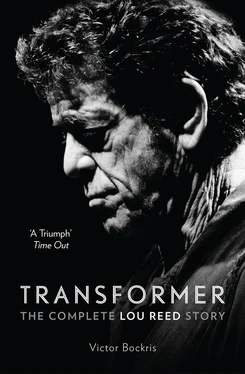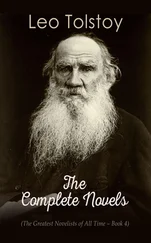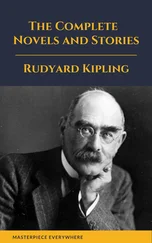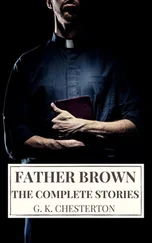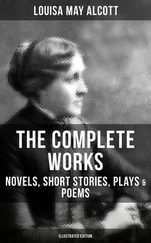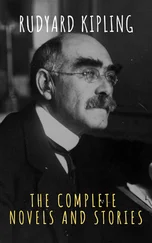Lou had already formed his ambition to be a rock-and-roller and a writer. The university’s rich music scene consisted of an eclectic mix of talents like Garland Jeffreys, a future singer-songwriter and Reed acolyte two years younger than Lou; Nelson Slater, for whom Lou would later produce an album; Felix Cavaliere, the future leader of the Young Rascals; Mike Esposito, who would form the Blues Magoos and the Blues Project; and Peter Stampfel, an early member of the Holy Modal Rounders, who would become a pioneer of folk rock. While colleges in New York and Boston produced folksingers in the style of Bob Dylan, Syracuse created a bunch of proto-punk rockers.
Most importantly for Lou musically, it was at Syracuse he met fellow guitarist Sterling Morrison, a resident of Bayport, Long Island, who had a similar background. Just after Lou got kicked out of ROTC, Sterling, who was never actually enrolled at Syracuse but spent a lot of time there hanging out and sitting in on some classes, was visiting another student, Jim Tucker, who occupied the room below Lou’s. Gazing out Tucker’s window at the ROTC cadets marching up and down the quad one afternoon, Morrison suddenly heard “earsplitting bagpipe music” wail from someone’s hi-fi. After that, the same person “cranked up his guitar and gave a few shrieking blasts on that.” Excited, Morrison realized, “Oh, there’s a guitar player upstairs,” and prevailed on Tucker for an introduction.
When they met at 3 a.m. the following morning, Lou and Sterling discovered they shared a love for black music and rock and roll. They also loved Ike and Tina Turner. “Nobody even knew who they were then,” Morrison recalled. “Syracuse was very, very straight. There was a one percent lunatic fringe.”
Luckily, the drama, poetry, art, and literary scenes were just as alive as the music scene for that one percent fringe. Soon Lou was spending the majority of his time playing guitar, reading and writing, or engaging in long rap sessions with like-minded students. Many of Lou’s conversations about philosophy and literature took place in the bars and coffee shops he and his friends began to call their own. Each restaurant had its social affiliations. Lou’s crowd set up camp at the Savoy Coffee shop run by a lovable old character, Gus Joseph, who could have walked right out of a Happy Days TV episode. At night, they drank at the Orange Bar, frequented predominantly by intellectual students. According to Lou, he took two steps out of school and there was the bar. “It was the world of Kant and Kierkegaard and metaphysical polemics that lasted well into the night,” he remembered. “I often went to drink alone to that week’s lost everything.” He had become accustomed to taking prescription drugs and smoking pot, but Lou was not yet a heavy user of illegal substances. At the most he might have a Scotch and a beer.
At Syracuse, Lou presented himself as a tortured, introspective, romantic poet. Following the dictate that the first step to becoming a poet is to look and act like one, Lou liked, for example, to give the impression that he was unwashed, but that wasn’t true. According to one friend, “He wasn’t about to go out unless he took a shower first.” As far as his costume was concerned, he was still stuck somewhere between the suburban teenager in loafers and button-down shirts and the rumpled dungarees and work shirts of the Kerouac rebel. Observers remembered him as more chubby and cherubic than thin and ascetic. In fact, he didn’t dress unusually at all. If anything, he dressed poorly, wearing the same pair of dirty jeans for months. As for his demeanor, Lou copped the uptight approach of the young Rimbaud. He was just beginning to swing with the legend of his electroshock treatments, turtleneck sweaters, and the whole James Dean inspired “I’ve suffered so much everything looks upside down” routine.
According to one student who occasionally jammed with him, “Part of his aura was that he was a psychologically troubled person who in his youth had had electroshock treatments which clearly had an effect on him. He used that as part of his persona. Where the reality and the fantasy of what he was crossed, who knew.” For a sarcastic kid who had grown up with buck teeth, braces, and a nerd’s wardrobe, Lou wasn’t doing badly turning himself into the image of a totally perverse psycho. However, whatever he did with his wardrobe and his attitude to make himself hip, there was one nightmarish detail about his looks that seemed always to overwhelm him—his hair. His frizzy helmet had plagued him since he’d started looking into the mirror with intense interest in his twelfth year. What stared back at him throughout his adolescence was a Jewish version of Alfred E. Neumann.
Since America had been a largely anti-Semitic nation, the Jewish “Afro” was seen as geekishly ethnic. In the early sixties, Bob Dylan would single-handedly change the image of what a hip young boy could look like. Though the film industry and media characters like Allen Ginsberg had begun to turn the whole Jewish male persona into something ultra-chic, nobody came close to having the pervasive influence of Bob Dylan. As Ginsberg explained to his biographer Barry Miles, when Dylan appeared, particularly in his 1965 Bringing It All Back Home incarnation, he made the hooked nose and frizzy hair the very emblem of the hip, intellectual avant-garde. By the time Lou got to college, however, and started to resculpt himself into the Lou Reed who would emerge in 1966 as the closest competition to Dylan for the hippest rock star in the world, he was ready to do something about his hair. At Syracuse he discovered a hair-treatment place in the black neighborhood and on several occasions had his hair straightened.
Just like his British counterparts Keith Richards of the Rolling Stones or John Lennon of the Beatles, Lou rejected the lifestyle that came before the bomb and was remaking himself out of a combination of his favorite stars. Such self-creation was not difficult for Lou, who often claimed he had as many as eight personalities. He now clothed these personalities in the costumes and attitudes of a cast of media characters who were as important to his image as the first creative friends he would hook up with at Syracuse.
First among them was Lenny Bruce. Though damned by his legal problems to a horrible fate, Bruce was at the apogee of his career. In the eyes of the public he was the hippest, fastest-talking American poet and philosopher around. Bruce spiked his act—a kind of Will Rogers on fast-forward—by injections of pure methamphetamine hydrochloride, which would in time become Lou’s own drug of choice. Many of Reed’s mannerisms, his hand gestures, the way he answered the phone as if he was asleep, the rhythm of his speech, came directly from Bruce.
As for the rest of Lou’s media idols, you only have to look at a panel of head shots of the stars of the era to see what Lou would take in time from Frank Sinatra, Jerry Lewis in The Bellboy , Montgomery Clift, and William Burroughs, to name but a few of the more obvious ones. In fact, one of Lou’s most attractive characteristics was the way he appreciated and celebrated his heroes. He was always trying to get Hyman, for example, a straight law student whose path would lead in a direction diametrically opposite to Lou’s, to read Kerouac and then rap with him about it. Lou loved turning people on to the new sounds, the new scenes, and the new people.
A lot of the artistic kids who went to Syracuse look back upon it with disdain as a football school dominated by the “fucking” Orangemen. In fact, in that watershed period between the end of McCarthyism and the death of Kennedy, a new permissiveness swept through colleges across the country. Syracuse contained and nurtured a lot of different environments. Certainly the fraternity environment still dominated the American campus, and the majority of male and female students still aligned themselves with a fraternity or sorority in sheeplike fashion. There was, however, a vital cultural split between the Jewish and the non-Jewish fraternities. The Jewish fraternities were for the most part hipper, more receptive to the new culture and more open to alternative ways of living. Despite completely rejecting Sigma Alpha Mu and attaching himself primarily to the arty intellectual crowd, some of whom had apartments off campus, Lou maintained a loyal friendship with Hyman and was, in fact, adopted as something of a mascot by the Sammies as their resident oddball. They weren’t about to miss out completely on a character who had already, in the first half of his freshman year, carved out an image for himself as tempestuous and evil. In fact, Jewish fraternities in colleges across America would provide some of the most receptive of Lou Reed’s audiences throughout his career.
Читать дальше
